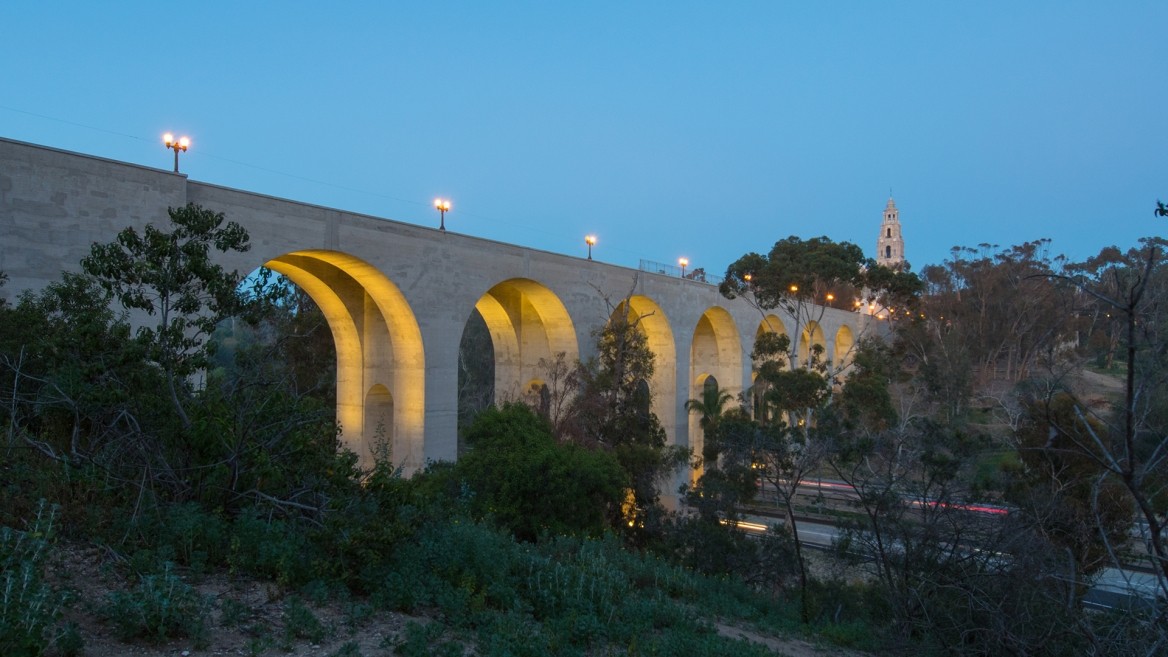Laurel Street Bridge

TYLin was selected by the California Department of Transportation to upgrade the historic Laurel Street Bridge in San Diego, California, to current earthquake safety standards.
The overcrossing, also known as the Cabrillo Bridge, carries vehicles, pedestrians, and bicyclists and is a vital link across State Route 163 and Cabrillo Canyon into Balboa Park, one of the San Diego’s main visitor destinations.
Built in 1915, the Laurel Street Bridge is listed on the National Register of Historic Places. This made preservation of its historic character a controlling design criterion.
Resembling a Roman aqueduct, the 769-foot-long overcrossing is a reinforced concrete cantilevered hollow arch structure with a maximum height of 129 feet. Retrofitting for seismic strength and rehabilitation was required due to corroded steel and unsound concrete.
TYLin’s scope of work included performing detailed inspections, determining the scope and cost of the necessary rehabilitation work, developing the seismic retrofit strategy, preparing final plans, specifications, and estimate (PS&E), and providing support during construction for both the rehabilitation and seismic retrofit.
Project Highlights:
- TYLI's seismic retrofit strategy used both response-spectrum and non-linear time history analyses.
- The bridge's historic character was preserved by concealing all retrofitting within the internal framework.
- The superstructure uses external post-tensioning for seismic stability.
- Pedestrian access was always maintained during construction.
- Bridge closure to traffic was limited to a short, four-month window.
- To facilitate access for bridge inspection, TYLin designed interior, Occupational Safety and Health Administration (OSHA)-compliant catwalks and ladders, upgraded the electrical system, and added lighting.
Image Credit: Blueprint 22 Photography